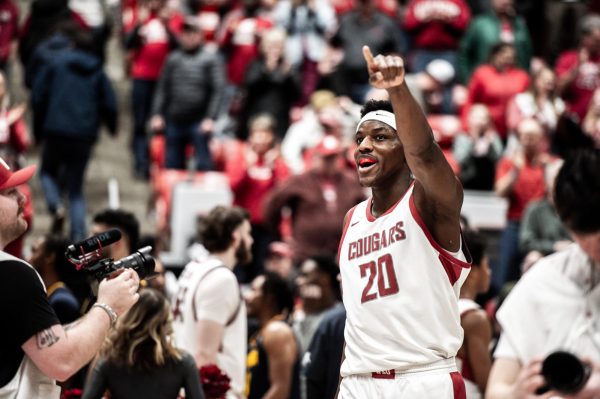The proof is in the padding
February 26, 2014
Coaches, players and football experts all agree on one thing when it comes to wide receivers and running backs; speed kills. Every year in the NFL, people concerned with the NFL Scouting Combine obsess over the 40-yard dash, attempting to locate that next burner in the incoming rookie class.
This year Kent State’s Dri Archer stole the speed show when he ran a 4.26 second 40-yard dash, just two-hundredths of a second slower than Tennessee running back Chris Johnson’s record setting 4.24 second 40-yard dash time
On the other side of the coin is Oregon’s electrifying hybrid wide receiver/running back weapon De’Anthony Thomas. Many predicted Thomas to be the fastest player in this rookie class, however his 40-yard dash time placed him in the middle of the pack among skill players, with his official time coming in at an unspectacular 4.5 seconds.
While Archer’s blazing time makes him technically the fastest player in this year’s rookie class, it is questionable whether his 40-yard dash time will actually translate to him being the fastest player on the football field.
According to the NFL, Archer’s 40-yard dash time was the equivalent of running 23.7 miles per hour at top speed. This is in a skin-tight, friction-reducing track suit that is designed to allow players to reach their maximum potential in this given drill, as well as the other drills players participate in during the combine.
With that being said, let’s turn the clock back to this year’s Fiesta Bowl where Oregon took on Kansas State. In the opening kickoff of the game, De’Anthony Thomas returned the kick 94 yards for a touchdown. According to ESPN, Thomas topped out at a blistering 26 miles per hour. That’s right, over two miles per hour faster than Archer’s top speed in his 40-yard dash.
Thomas was not wearing a skin-tight, friction-reducing track suit in the Fiesta Bowl either. According to Livestrong, the average football player’s pads can add at least 20 to 30 pounds depending on the player. This means Thomas was actually carrying a considerable amount of extra weight when he ran fast enough to get a speeding ticket sprinting down Stadium Way in Pullman.
These facts defy logic. It doesn’t make sense that someone who runs a considerably slower 40-yard dash than another player can be considerably faster when you throw 20 extra pounds worth of pads on him in game time. This is when the frustrating concept of unmeasurable variability comes into play.
Firstly, not every person reacts exactly the same when they put on pads. Whether it comes down to body type and how the pads restrict muscle and limb movement or the mental aspect of carrying something bulky and awkward while attempting to move and react at tops speeds, the fact is that not everyone will be able to move as well as others once they are n the field.
To the frustration of the analytical or scientific mind, there are also certain variables that simply cannot be measured; variables such as determination, motivation and other intangible factors that simply cannot be statistically measured, but are often undeniable when witnessed in the form of an amazing feat of strength, speed or endurance.
Amazing physical feats typically are justified by adrenaline. When a person is in the heat of the moment, adrenaline kicks in and people are often able to do defy norms. Usually the person performing the amazing act can’t explain what happened. They simply acted and reacted.
This concept points to the fact that it is nearly impossible to predict exactly how someone will perform in a game time situation as compared to performance in the NFL combine. However, there’s one method which could possibly give scouts and coaches a truer reading of a player’s game time speed: putting the players in pads for the 40-yard dash.
In an article done by ESPN prior to the 2013 NFL Combine, nine individuals involved in the NFL, consisting of both coaches and general managers, were asked what they would like to see differently in the NFL Combine. Of those nine, without any provocation toward the subject of players wearing pads, three of the men mentioned putting players in pads as a key concern toward combine improvement.
Indianapolis Colts general manager Ryan Grigson summed it up nicely: “Put them in pads; that’s the only thing. The great thing about this is it’s just one more reference point. If you think a guy’s a great cover corner, a great athlete, has great speed on film, then if he runs 4.35 (in pads) you say, ‘OK, he’s really that guy.’ But the play speed and the actual game playing is so huge.”



















